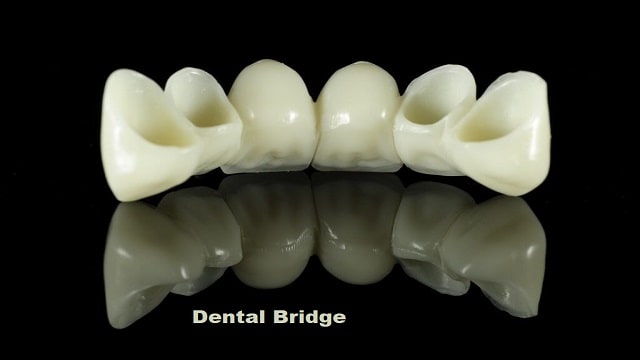Dental Bridge
Dental bridge is a device to replace missing teeth. As the name suggests, it consists of several false teeth that are joined together, to fit the gums or cavity where the teeth used to grow.
This is an alternative to dentures that is suitable for those who have lost several teeth at once. This tool can also help you eat and speak more effectively and also make your teeth look better.
Dental bridges can be made from a variety of different materials, including gold, alloy, or porcelain. When replacing front teeth, porcelain is most often used because it can be matched to the natural color of the teeth.
Benefits of Dental Bridge
Dental bridges can provide many benefits, including:
- Provides a good and natural appearance of teeth and a smile.
- Restore the ability to speak normally. Because missing teeth can make it difficult for you to pronounce words.
- Maintains normal facial structure by preventing bone loss from the jaw in the space of missing teeth.
- Helps chew food more efficiently.
- Prevents adjacent teeth from moving into the empty space, which can cause problems with the bite and other complications.
Types of Dental Bridges
Dental bridges have four main types, namely:
-
Traditional
This type is made of metal, porcelain, or ceramic, and is the most common. It has two or more crowns and teeth that are all connected. The crowns will hold the bridge in place.
-
Cantilever
This type of dental bridge has a pontic that is connected to only one abutment tooth. This can sometimes be an option for people who have teeth on only one side of the gap.
-
Maryland
This is a type of bridge commonly used for front teeth. It is usually made of porcelain fused to metal or ceramic teeth, and supported by a framework.
-
Implant-Supported
This bridge is similar to the traditional one. However, instead of being cemented to the teeth, it is held in place by implants.
When Should You Get a Dental Bridge?
You may need to install a dental bridge if you are missing one or more permanent teeth that are in a row. However, the requirements to be able to install this device are:
- Have good overall health. For example, no serious medical conditions, infections, or other health problems.
- Have healthy teeth and strong bone structure to support the bridge.
- Have good oral and dental health.
- Can perform proper oral hygiene to maintain the condition of the dental bridge.
Dental Bridge Installation Procedure
To have a dental bridge, you usually need at least two appointments with your dentist. During the first visit, your dentist will reshape your abutment teeth. They will remove some of the enamel and dentin, making room for the crown.
Then, the dentist will perform a digital examination or scan of the teeth. The dental laboratory will then use the impression or scan as a model to create a suitable dental bridge.
The doctor will place a temporary bridge, to protect the open area in the mouth, until the lab finishes making the permanent bridge. Then, on the second visit, the doctor will remove the temporary bridge and place the permanent bridge.
Once installed, the doctor will check the installed dental bridge. If necessary, the doctor will also make necessary adjustments to ensure it fits comfortably.
Read more about other types of dental procedures here:
Installation and Maintenance Risks
There are several risks of installing a dental bridge that need to be understood, namely:
- Damage to the abutment teeth can compromise the bridge.
- Bacteria and plaque can get under an ill-fitting bridge or crown and cause tooth decay.
- Crowns can change the structure of the teeth and affect the bite.
- A bridge can collapse if the supporting teeth are not strong enough to support it.
The success of a dental bridge depends on the health and strength of your remaining teeth. If you have one, it is important to prevent tooth decay and gum disease that can lead to tooth loss.
For proper dental and gum care, here are some tips:
- Brush your teeth at least twice a day and floss daily. You may need to use a special flosser called a threader, which allows you to insert the floss between the bridge and your gums.
- Visit your dentist regularly, to detect problems early.
- Eat a balanced diet. Increase your consumption of fruits, vegetables, and fiber.
- Limit consumption of chewy and fibrous foods such as meat.

